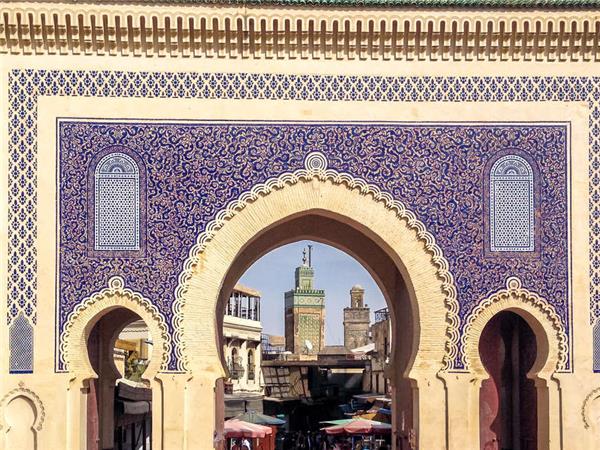padrirestaurant.net – Morocco, a country of diverse landscapes and rich cultural heritage, is home to four imperial cities that have stood the test of time. These cities, Marrakesh, Fez, Meknes, and Rabat, each have their own unique charm and character, yet they all share a common thread of majesty that is unmistakably Moroccan. In this article, we will explore life in these imperial cities, delving into their history, culture, and the everyday experiences that define them.
Marrakesh: The Red City
Marrakesh, often referred to as the “Red City” due to its distinctive terracotta walls, is a bustling metropolis that seamlessly blends tradition with modernity. The city’s heartbeat is the famous Jemaa el-Fnaa square, where snake charmers, acrobats, and storytellers entertain crowds that have gathered for centuries. The souks of Marrakesh are a labyrinth of colors and scents, where one can find everything from hand-woven carpets to exotic spices. Life in Marrakesh is vibrant and lively, with locals and tourists alike drawn to its enchanting medina and the tranquil gardens of the Majorelle Garden and the Menara Gardens.
Fez: The Cultural Heart
Fez, the oldest of the imperial cities, is a treasure trove of Moroccan history and culture. The city is divided into Fes el-Bali (the old city) and Fes Jdid (the new city), with the former being a UNESCO World Heritage site. The medina of Fez is one of the largest and best-preserved in the Arab world, with its narrow streets lined with ancient madrasas, mosques, and traditional artisan workshops. Life in Fez revolves around its bustling markets, historic universities, and the famous Chouara Tannery, where leather has been dyed using traditional methods for generations.
Meknes: The Versailles of Morocco
Meknes, often overshadowed by its more famous counterparts, is a city of grandeur and elegance. Known as the “Versailles of Morocco,” it was built by Sultan Moulay Ismail in the 17th century to serve as his capital. The city’s impressive walls, gates, and palaces reflect the sultan’s ambition to create a city that would rival the splendor of European capitals. Life in Meknes is characterized by its serene atmosphere, with locals often seen strolling through the lush gardens of the Royal Palace or enjoying the tranquility of the Moulay Ismail Mausoleum.
Rabat: The Capital of Elegance
Rabat, the political capital of Morocco, is a city of elegance and sophistication. Unlike the other imperial cities, Rabat has a more European feel, with wide boulevards, French colonial architecture, and the Atlantic Ocean as its backdrop. The Kasbah of the Udayas, with its blue and white painted houses, is a photographer’s dream, while the Hassan Tower and the Mohammed V Mausoleum stand as symbols of Morocco’s modern identity. Life in Rabat is a harmonious blend of tradition and modernity, with a vibrant cultural scene and a laid-back coastal lifestyle.
Daily Life in the Imperial Cities
Life in the imperial cities of Morocco is a tapestry of ancient traditions and contemporary influences. The call to prayer echoes through the streets, punctuating the day with its melodic rhythm. Families gather in local cafes to share mint tea and sweets, while children play in the squares and parks. The cities are alive with the sounds of music and the bustle of commerce, yet there is always a sense of community and hospitality that welcomes both locals and visitors.
The imperial cities are also centers of culinary excellence, with each city boasting its own specialties. From the tagines and couscous of Marrakesh to the pastilla and harira of Fez, the food is a reflection of the rich cultural heritage of Morocco.
Conclusion
The majesty of Morocco’s imperial cities lies not only in their architectural splendor and historical significance but also in the vibrant life that pulses through their streets. Each city offers a unique window into Moroccan culture, inviting visitors to immerse themselves in the traditions, flavors, and rhythms of daily life. Whether exploring the ancient medinas, savoring the local cuisine, or simply enjoying the warm hospitality of the Moroccan people, a visit to these cities promises an unforgettable experience.
